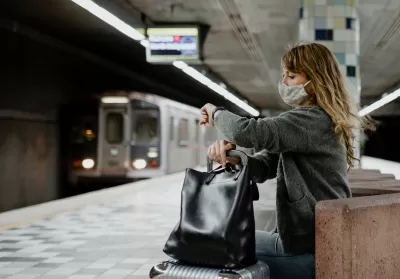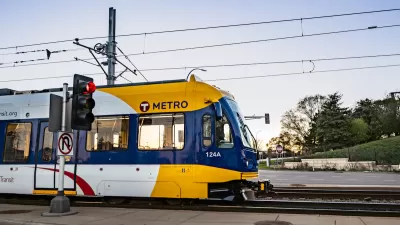Safety and harassment are commonly cited reasons passengers, particularly women and girls, avoid public transit.

“Street harassment is a common phenomenon that many public-transit riders, but especially women and girls, experience on buses and trains, in stations and at bus stops, as they travel between their homes, jobs, schools, events, and recreational activities.” Gabrielle Gurley notes this stark fact at the top of an article in The American Prospect.
In an effort to reduce harassment and make transit safer for women and girls, California legislators passed a law calling for a survey of transit riders’ experiences with harassment, and a second law requiring major transit agencies to collect passenger data on harassment.
In response to user surveys and data about harassment, San Francisco’s BART and Los Angeles Metro launched transit ambassador programs that staff transit stations with unarmed security personnel. “For its part, BART started running shorter trains. Fewer cars with more people on each car helps people feel safer. After this change, the agency has had fewer incidents involving police.”
The agencies are also including zero-tolerance language in their policies and conducting outreach about harassment and available resources, such as emergency call buttons that some passengers are unaware of.
According to the article, “LA Metro saw its highest ridership increases last year after its high-profile moves to offer information services and deploy more security officers, transit ambassadors, crisis intervention specialists, and workers to handle people suffering from drug abuse and homelessness. The agency also made numerous facility safety improvements, adding new lighting, additional call boxes, station music, and modified entrances.”
FULL STORY: California Public-Transit Agencies Confront Rider Harassment

Study: Maui’s Plan to Convert Vacation Rentals to Long-Term Housing Could Cause Nearly $1 Billion Economic Loss
The plan would reduce visitor accommodation by 25,% resulting in 1,900 jobs lost.

North Texas Transit Leaders Tout Benefits of TOD for Growing Region
At a summit focused on transit-oriented development, policymakers discussed how North Texas’ expanded light rail system can serve as a tool for economic growth.

Why Should We Subsidize Public Transportation?
Many public transit agencies face financial stress due to rising costs, declining fare revenue, and declining subsidies. Transit advocates must provide a strong business case for increasing public transit funding.

How to Make US Trains Faster
Changes to boarding platforms and a switch to electric trains could improve U.S. passenger rail service without the added cost of high-speed rail.

Columbia’s Revitalized ‘Loop’ Is a Hub for Local Entrepreneurs
A focus on small businesses is helping a commercial corridor in Columbia, Missouri thrive.

Invasive Insect Threatens Minnesota’s Ash Forests
The Emerald Ash Borer is a rapidly spreading invasive pest threatening Minnesota’s ash trees, and homeowners are encouraged to plant diverse replacement species, avoid moving ash firewood, and monitor for signs of infestation.
Urban Design for Planners 1: Software Tools
This six-course series explores essential urban design concepts using open source software and equips planners with the tools they need to participate fully in the urban design process.
Planning for Universal Design
Learn the tools for implementing Universal Design in planning regulations.
City of Santa Clarita
Ascent Environmental
Institute for Housing and Urban Development Studies (IHS)
City of Grandview
Harvard GSD Executive Education
Toledo-Lucas County Plan Commissions
Salt Lake City
NYU Wagner Graduate School of Public Service





























